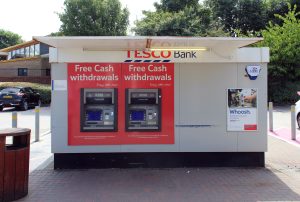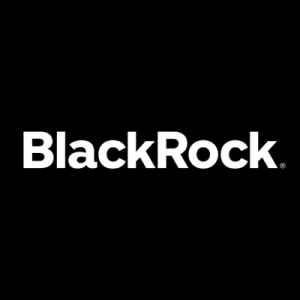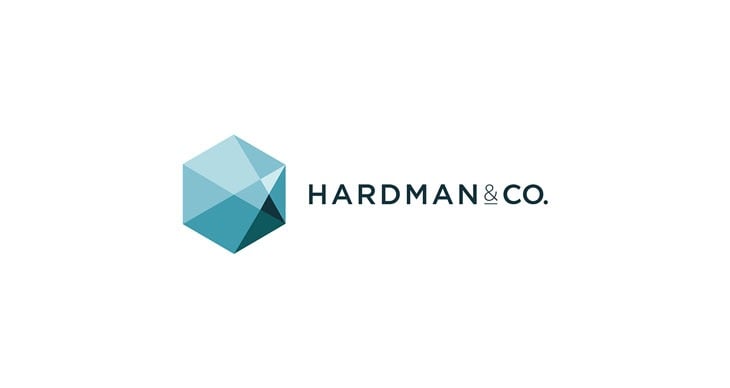Barclays Plc (LON:BARC), today announced Final results
Performance Highlights
·Delivering improving earnings for shareholders
·Improving operating leverage and investing in medium term growth initiatives with a particular focus on capital light activities with attractive returns
·Common equity tier 1 (CET1) ratio of 13.2% is at the end-state target of c.13%, with future profit generation supporting both investment and cash returns to shareholders
Returns
Group RoTE targets of >9% in 2019 and >10% in 2020
· Earnings per share (EPS) of 21.9p (2017: negative 3.5p) and Group return on tangible equity (RoTE) of 8.5% (2017: negative 1.2%), with profit before tax (PBT) up 20% to £5.7bn
· Barclays UK RoTE of 16.7% (2017: 17.8%), as PBT decreased 3% to £2.4bn
· Barclays International RoTE of 8.7% (2017: 4.4%), as PBT increased 10% to £3.9bn
Cost efficiency
Group cost guidance of £13.6-13.9bn1 in 2019, and cost: income ratio of <60% over time
· Group operating expenses decreased 2% to £13.9bn in line with guidance after excluding a charge for Guaranteed Minimum Pensions (GMP)
· The cost: income ratio, excluding litigation and conduct charges, improved to 66% (2017: 68%)
· Creating capacity within the cost base through elimination of legacy costs and productivity savings via Barclays Execution Services (BX) to improve operating leverage and investment in medium term growth initiatives, while delivering a reduction in absolute costs in 2018
Capital and dividends
At end-state CET1 ratio target of c.13%
6.5p total dividend for 2018
· Generated 140bps of capital from profits, more than offset by 71bps impact from litigation and conduct charges, 53bps from ordinary dividends and Additional Tier 1 (AT1) coupons paid and foreseen, and 33bps from the decision to redeem Preference Shares and Additional Tier 1 (AT1) securities in December 2018
· Capital returns policy updated – progressive ordinary dividend, supplemented by share buybacks as and when appropriate
·Barclays Group profit before tax was £3.5bn (2017: £3.5bn) which included litigation and conduct charges of £2.2bn (2017: £1.2bn) principally related to a £1.4bn settlement with the US Department of Justice (DoJ) with regard to Residential Mortgage-Backed Securities (RMBS) and charges of £0.4bn (2017: £0.7bn) due to Payment Protection Insurance (PPI) in Q118
·Excluding litigation and conduct charges, Group profit before tax increased 20% to £5.7bn despite the adverse effect of the 3% depreciation of average USD against GBP. Income was stable and operating expenses reduced 2%. The cost: income ratio improved to 66% (2017: 68%) which included a £140m charge to reflect the estimated increase in pension obligations due to GMP. Credit impairment charges reduced 37% to £1.5bn including updates for consensus-based macroeconomic forecasts in the UK and US during the year and the prudent management of credit risk. This improvement was partially offset by a Q418 £150m specific charge for the impact of the anticipated economic uncertainty in the UK
·Barclays UK profit before tax increased to £2.0bn (2017: £1.7bn). Excluding litigation and conduct, profit before tax decreased 3% to £2.4bn reflecting a 5% increase in impairment charges, due to a £100m charge for the anticipated economic uncertainty in the UK. Income was stable as lower interest margins were offset by strong balance sheet growth. Expenses increased 1% reflecting continued investment to grow the business and improve future operating efficiency. RoTE excluding litigation and conduct was 16.7% (2017: 17.8%)
·Barclays International profit before tax increased to £3.8bn (2017: £3.3bn). Income growth in Markets and the Consumer, Cards and Payments business was offset by the non-recurrence of prior year one-offs, from a US asset card sale and a valuation gain on Barclays’ preference shares in Visa Inc, and lower Banking income. Credit impairment charges decreased 56% primarily due to single name recoveries, updates for consensus-based macroeconomic forecasts in the UK and US, non-recurrence of single name charges in 2017 and the repositioning of the US cards portfolio towards a lower risk mix. Total operating expenses decreased 2% as continued investments in business growth, talent and technology were offset by lower costs for restructuring and structural reform. RoTE excluding litigation and conduct was 8.7% (2017: 4.4%), with the Corporate and Investment Bank (CIB) and Consumer, Cards and Payments delivering 7.1% and 17.3% (2017: 2.2% and 16.8%) respectively
·Attributable profit was £1.4bn (2017: loss of £1.9bn). This reflected the non-recurrence of a £2.5bn loss related to the sell down of Barclays Africa Group Limited (BAGL) and a tax charge of £1.1bn compared to a 2017 charge of £2.2bn which included a one-off net charge of £0.9bn due to the re-measurement of US deferred tax assets (DTAs). Basic earnings per share was 9.4p (2017: loss per share of 10.3p) and excluding litigation and conduct was 21.9p (2017: loss per share of 3.5p)
·Tangible net asset value (TNAV) per share was 262p (December 2017: 276p) as 21.9p of earnings per share, excluding litigation and conduct, was more than offset by the implementation of IFRS 9, impact of litigation and conduct charges, the redemption of Preference Shares and AT1 securities, as well as dividend payments. In Q418 TNAV increased by 2p, the third consecutive quarter of TNAV accretion.
Group Chief Executive Officer’s Review
“2018 represented a very significant period for Barclays.
In the course of the year, having resolved major legacy issues and reduced the drag from low returning businesses, we started to see the earnings potential of the bank, as the strategy we have implemented began to deliver.
This was evident in the improved performance across the Group compared to 2017.
Excluding litigation and conduct, profits before tax were up by 20% to £5,701m and our Group Return on Tangible Equity was 8.5% for the year – close to our 2019 financial target of greater than 9%.
Earnings per share excluding litigation and conduct for the full year was 21.9p. Our CET1 capital ratio of 13.2% is at our target of around 13%, and we have grown tangible book value for three quarters in a row.
The progress made on these key measures demonstrates that our plan is working and we have a strong foundation on which to achieve our returns targets for this year and next.
The fundamental strength of our Group rests on a diversified, though connected, portfolio of businesses. Barclays is well diversified by geography, by product and by currency between our consumer and wholesale businesses, designed to produce consistent and attractive returns through the economic cycle. The results for 2018 demonstrate this.
Our overriding priority for 2019 and 2020 is the attainment of our returns targets. Beyond those we are also focusing on medium term revenue growth opportunities – opportunities which rely on technology rather than capital. Such investment and focus beyond the immediate was simply not a viable option during the many years of reshaping this company. The efficiencies we have driven have created the capacity to invest to strengthen and grow our business within our cost guidance of £13.6-13.9bn for 2019, although we have the ability to flex that investment to a degree to support our RoTE targets if the environment requires us to do so.
In 2018, based on our strong capital generation, Barclays restored the dividend to 6.5p and redeemed expensive preference shares dating from the financial crisis. This is excellent progress, but not sufficient.
Going forward the principal calls on future earnings should now be returns to shareholders and investing to grow the business. We will use the strong capital generation of the bank to return a greater proportion of those earnings to shareholders by way of dividends and to supplement those dividends with additional returns, including share buybacks. I am optimistic for our prospects to do more in 2019 and beyond.”
James E Staley, Group Chief Executive Officer
Group Finance Director’s Review
Results for the year reflected good progress against our strategy. Excluding litigation and conduct charges, the Group return on tangible equity was 8.5% with earnings per share of 21.9p. Stable income and a reduction in operating expenses drove positive jaws and an improved cost: income ratio of 66%, with a 37% improvement in credit impairment charges resulting in a 20% increase in profit before tax despite the 3% depreciation of average USD against GBP.
The CET1 ratio of 13.2% is at the end-state target, and Barclays declares a total dividend of 6.5p for 2018.
Group performance
· Profit before tax was £3,494m (2017: £3,541m). Excluding litigation and conduct charges, profit before tax increased 20% to £5,701m driven by an improvement in credit impairment charges and a reduction in operating expenses. The 3% depreciation of average USD against GBP adversely impacted profits
· Total income was £21,136m (2017: £21,076m). Barclays UK income was stable as lower interest margins were offset by strong balance sheet growth. Barclays International income growth in Markets, which increased 9%, was offset by lower Banking income, primarily from a 20% decrease in Corporate lending income reflecting the strategy of redeploying Risk Weighted Assets (RWAs) to higher returning businesses. Consumer, Cards and Payments income growth was offset by the non-recurrence of prior year one-offs, from a US asset card sale and a valuation gain on Barclays’ preference shares in Visa Inc. Head Office income was a net expense of £273m (2017: £159m), and the Group benefited from the non-recurrence of negative income associated with the former Non-Core division, which was closed on 1 July 2017
· Credit impairment charges decreased 37% to £1,468m primarily driven by single name recoveries, updates to consensus-based macroeconomic forecasts in the UK and US during the year, the non-recurrence of single name charges in 2017, portfolio adjustments as IFRS 9 has continued to embed and the prudent management of credit risk, including the impact of repositioning the US cards portfolio towards a lower risk mix. This decrease was partially offset by a Q418 £150m specific charge for the impact of the anticipated economic uncertainty in the UK. The Barclays Group loan loss rate was 44bps (2017: 57bps)
· Operating expenses of £13,896m (2017: £14,249m) reduced 2% as continued investment to grow the business and improve future operating efficiency was more than offset by elimination of legacy costs, productivity savings and a lower bank levy charge due to a reduction in the levy rate and the impact of prior year adjustments. The cost: income ratio, excluding litigation and conduct, reduced to 66% (2017: 68%)
· Total operating expenses of £16,243m (2017: £15,456m) included litigation and conduct charges of £2,207m (2017: £1,207m) and a £140m charge for GMP in relation to the equalisation of obligations for members of the Barclays Bank UK Retirement Fund (UKRF). There was no capital impact of the GMP charge as, at 31 December 2018, the UKRF remained in accounting surplus
· Other net income declined to £69m (2017: £257m) primarily reflecting the non-recurrence of gains on the sales of Barclays’ share in VocaLink and a joint venture in Japan in Q217
· The Group’s effective tax rate reduced to 32.1% (2017: 63.3%). The 2017 rate included a one-off net charge due to the re-measurement of DTAs as a result of the reduction in the US federal corporate income tax rate. The underlying effective tax rate was 20.9% (2017: 29.4%), due to the lower US federal corporate income tax rate and the beneficial impact of adjustments to prior periods recognised in 2018
· The Group’s underlying effective tax rate for future periods is expected to be in the low-to mid-20 percents, excluding the impact of the future accounting change that will require tax relief on payments in relation to AT1 instruments to be recognised in the income statement, as opposed to retained earnings
· Attributable profit was £1,394m (2017: loss of £1,922m). This reflected the non-recurrence of a £2.5bn loss related to the sell down of BAGL and a tax charge of £1,122m compared to a 2017 charge of £2,240m which included a one-off net charge of £0.9bn due to the re-measurement of US DTAs
· RoTE was 8.5% (2017: negative 1.2%) and earnings per share was 21.9p (2017: loss per share of 3.5p), excluding litigation and conduct. Statutory RoTE was 3.6% (2017: negative 3.6%) and basic earnings per share was 9.4p (2017: loss per share 10.3p)
· TNAV per share was 262p (December 2017: 276p) as 21.9p of earnings per share, excluding litigation and conduct, was more than offset by the implementation of IFRS 9, impact of litigation and conduct charges, the redemption of Preference Shares and AT1 securities, as well as dividend payments. In Q418 TNAV increased by 2p, the third consecutive quarter of TNAV accretion
Group capital and leverage
· Barclays’ CET1 ratio ended the year at 13.2% (December 2017: 13.3%), at our end-state target of c.13%
· CET1 capital decreased £0.5bn to £41.1bn as underlying profit generation of £4.2bn, was more than offset by £2.1bn of litigation and conduct charges, as the bank resolved major legacy matters, £1.7bn for ordinary dividends and AT1 coupons paid and foreseen, and £1.0bn from the redemption of capital instruments
· RWAs remained broadly stable at £311.9bn (December 2017: £313.0bn). The Group continued to actively manage capital allocation to businesses during the year, including the redeployment of RWAs within CIB to higher returning businesses, while targeting growth in selected consumer businesses in Barclays UK and Consumer, Cards and Payments. Within Barclays UK, the increase in RWAs included the impact of a change in the regulatory methodology for the Education, Social Housing and Local Authority (ESHLA) portfolio which was partly offset by a reduction in Head Office due to the regulatory deconsolidation of BAGL
· The UK leverage ratio remained flat at 5.1% (December 2017: 5.1%). The UK leverage exposure increased marginally to £999bn (December 2017: £985bn) including securities financing transactions (SFTs), due to the CIB utilising leverage balance sheet more efficiently within high returning financing businesses. The average UK leverage ratio decreased to 4.5% (December 2017: 4.9%)
Group funding and liquidity
· The liquidity pool increased to £227bn (December 2017: £220bn) driven largely by net deposit growth across businesses. The liquidity coverage ratio (LCR) increased to 169% (December 2017: 154%), equivalent to a surplus of £90bn (December 2017: £75bn) to the 100% regulatory requirement. Barclays Group also continued to maintain surpluses to its internal liquidity requirements. The strong liquidity position reflects the Barclays Group’s prudent approach given the continued macroeconomic uncertainty
· Barclays Group issued £12.2bn of minimum requirement for own funds and eligible liabilities (MREL) instruments from Barclays PLC (the Parent company) in a range of tenors and currencies. Barclays Group is well advanced in its MREL issuance plans, with a Barclays PLC MREL ratio of 28.1% as at 31 December 2018 relative to an estimated requirement including requisite buffers of 30.0% by 1 January 2022
· Barclays Bank PLC continued to issue in the shorter-term markets and Barclays Bank UK PLC issued in the shorter-term and secured markets, helping to maintain their stable and diversified funding bases
· The overall funding structure has improved further – Barclays Group has continued to reduce its reliance on short-term wholesale funding, where the proportion maturing in less than 1 year fell to 30% (December 2017: 31%)
Other matters
· In Q118 Barclays reached a settlement with the US DoJ to resolve the civil complaint brought by the DoJ in December 2016 relating to RMBS sold by Barclays between 2005 and 2007. Barclays paid a civil monetary penalty of $2.0bn (£1.4bn)
· In May 2018 Barclays announced that the Crown Court had dismissed all of the charges that had been brought by the Serious Fraud Office (SFO) against Barclays PLC and Barclays Bank PLC regarding matters which arose in the context of Barclays’ capital raisings in 2008. In October 2018, the High Court denied the SFO’s application to reinstate the charges, which were consequently dismissed
· Additional charges of £0.4bn (2017: £0.7bn) relating to PPI were recognised in Q118. The remaining PPI provision as at 31 December 2018 was £0.9bn (December 2017: £1.6bn) to cover claims through to the deadline of 29 August 2019. Management views its current PPI provision as appropriate, but will continue to closely monitor complaint trends and the associated provision adequacy
· On 1 April 2018 Barclays successfully established its ring-fenced bank, Barclays Bank UK PLC, after receiving approval from the Prudential Regulation Authority (PRA) and the High Court of Justice of England and Wales to implement the ring-fencing transfer scheme under Part VII of the Financial Services Markets Act 2000
· In Q418 Barclays Bank Ireland PLC (BBI) received confirmation of its extended banking licence as part of Barclays’ plans to expand BBI in anticipation of the UK’s departure from the EU in March 2019. On 29 January 2019 Barclays received approval from the High Court of Justice of England and Wales for its banking business transfer scheme application under Part VII of the Financial Services and Markets Act 2000
Dividends
· A half year dividend of 2.5p per share was paid on 17 September 2018. Barclays declares a full year dividend of 4.0p per share, resulting in a total dividend of 6.5p per share for 2018
· Barclays understands the importance of delivering attractive cash returns to shareholders. Barclays is therefore committed to maintaining an appropriate balance between total cash returns to shareholders, investment in the business and maintaining a strong capital position. Going forward, Barclays intends to pay a progressive ordinary dividend, taking into account these objectives and the earnings outlook of the Group. It is also the Board’s intention to supplement the ordinary dividends with additional cash returns, including share buybacks, to shareholders as and when appropriate
Outlook and guidance
· Barclays is on track in the execution of its strategy and continues to target a RoTE1 of greater than 9% for 2019 and greater than 10% for 2020 and operating expenses1 guidance in the range of £13.6-13.9bn for 2019. The Group’s 2018 results reflect good progress towards these targets
Tushar Morzaria, Barclays Finance Director





































